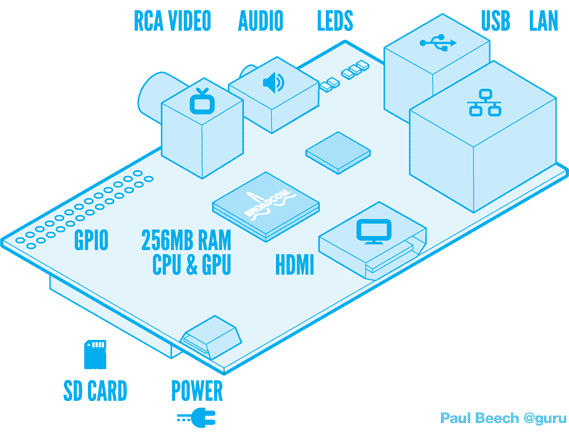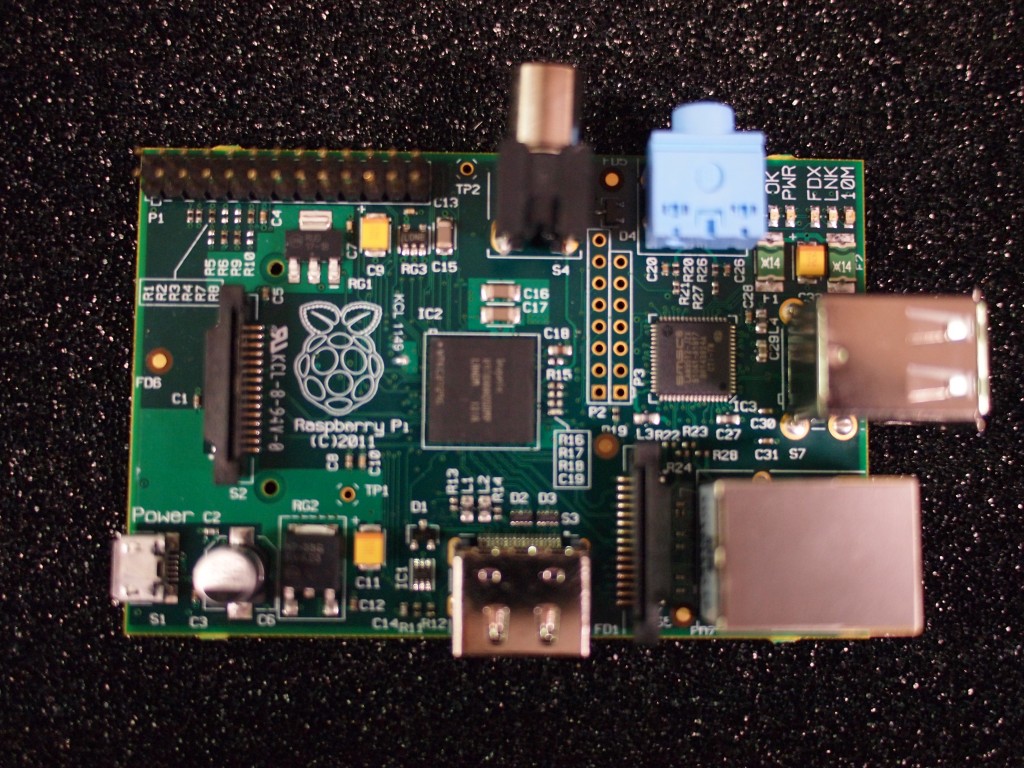Move over LEGO brick!
Here comes Raspberry Pi, and it is going to change the face of robotics forever!
Raspberry Pi is Linux machine the size of a credit card. Plug in your television and a keyboard and you have a fully-functional computer for $25.
YES!!!
TWENTY-FIVE DOLLARS!!!!

Models:
There are two models, Model A and Model B.
Model A has 256MB RAM, 1 USB port and no Ethernet (network connection).
Model B has 256MB RAM, 2 USB ports and an Ethernet port.
Specs:
It relies on a System on a Chip (SoC). The particular SoC used is Broadcom BCM2835. The Broadcom BNC2835 is a High Definition 1080p Embedded Multimedia Applications Processor. It relies on the ARM1176 (ARM1176JZF-S) Processor which has a floating point processor and runs at 700 MHz. Moreover, the SoC has a Videocore 4 GPU, which is capable of BluRay quality playback, using H.264 at 40MBits/s. The Broadcom BNC2835 has a fast 3D core accessed using the supplied OpenGL ES2.0 and OpenVG libraries. The GPU is capable of 1 Gpixel/s, 1.5 Gtexel/s or 24 GFLOPs of general purpose computing.
Size:
The Raspberry Pi is SMALL!
The card is slightly larger than 85.60 mm x 53.98 mm x 17 mm due to the fact that the SD card and connectors project over the edges. It weighs with a mass of 45g. The Raspberry Pi is low power and runs on 4 AA cells.
Programming:
Fedora, Debian and ArchLinux are supported and other distributions will be supported later. Python is the official educational language.
I cant wait to get my hands on one of these and begin interfacing directly with the LEGO motors and sensors!



